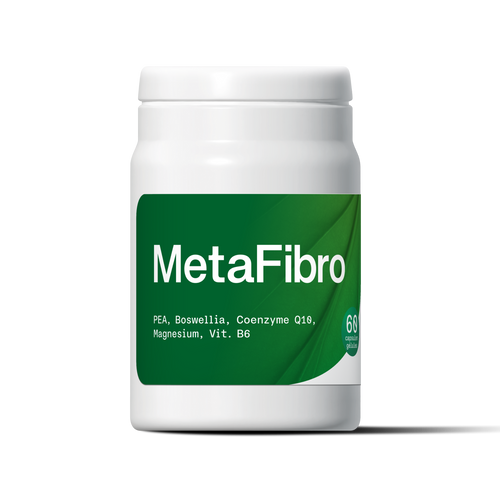Isolated in the 1960s by Professor Raphael Mechoulam, an Israeli researcher, cannabinoids from plants or phytocannabinoids (mainly those from cannabis) have scientifically proven effects. In particular CBD, a non-psychoactive substance, unlike THC.
What are cannabinoids?
Cannabinoids are chemical compounds that act on the body through the endocannabinoid system , composed of cannabinoid receptors (CB1 and CB2) and endogenous ligands (endogenous neurochemicals).
The role of CB1 and CB2 is to regulate homeostasis, the balance of all functions in the body.
- CB1 receptors are present in cells of the central and peripheral nervous system, both in nervous cells and glial cells.
- As for CB2 receptors, they are present in cells of the immune system.

The different types of cannabinoids
There are three types of cannabinoids:
- plant cannabinoids or plant cannabinoids or phytocannabinoids;
- endogenous cannabinoids;
- synthetic cannabinoids.
Plant cannabinoids or phytocannabinoids
The best known are THC (tetrahydrocannibol) and CBD (cannabidiol), active compounds found in large numbers in cannabis and certain plants. They are currently the subject of scientific studies to prove their scientific virtues, particularly CBD.
Note that the phytocannabinoids present on the fresh head of the plant (still on the plant or which has just been cut) are non-psychoactive substances (they do not cause any effects). They are called THCAs and CBDAs. It is during decarboxylation (drying or heating the plant head) that the substances become active.
Endogenous cannabinoids
Also called endocannabinoids , they are generated by the human body and that of certain animals. These types of cannabinoids are very similar to plant cannabinoids. Like them, they act on CB1 and CB2 receptors and activate the process of controlling neurotransmissions, the cardiovascular process, the process of the immune system and the regulation of pain.
Currently, there are two main endocannabinoids: anandamide and 2 — AG (2 — arachindonylglycerol). These two molecules are almost similar in structure to THC and CBD and have approximately the same actions.
More generally, anandamide acts as a neurotransmitter. It improves sleep, regulates eating and increases the level of motivation. Moreover, this endogenous cannabinoid is also called the happiness molecule. It would participate in the formation of neurons in areas of the brain responsible for emotion, learning and memory.
As for 2 — arachindonylglycerol, it is similar to CBD. It would improve the immune system and regulate appetite.
Synthetic cannabinoids
These types of cannabinoids are developed in the laboratory. They are particularly useful for carrying out experiments aimed at defining the relationship between molecular structure and cannabinoid activity.
Cannabis sativa, the main source of cannabinoids
Cannabis sativa or cultivated hemp contains nearly 500 cannabinoids, 100 of which are plant cannabinoids or phytocannabinoids. Cannabinoids are present on the glandular trichomes covering flowers, fruits and leaves in contact with the fruits. It is the plant that contains the most of these molecules. This is why most studies focus on the components of this plant.
It is an annual herbaceous plant cultivated since time immemorial. Its cultivation and marketing of its derived products are authorized in many countries provided that the THC level does not exceed 0.2%. Rich in CBD, cultivated hemp has scientifically proven virtues.
What other plants produce cannabinoids?
Besides cannabis sativa or cultivated hemp, there are also a number of plants containing phytocannabinoids. They are certainly less rich in plant cannabinoids, but they contain them. This is particularly the case for:
- cocoa;
- black pepper ;
- sunflower;
- black nose;
- echinacea.
Cocoa and cannabinoid
According to a scientific study carried out in the 1990s, cocoa has chemical compounds that act on the same receptors as cannabis. More particularly, cocoa contains N-acylethanolamines or NAEs which are cannabinoid-type fatty acids. N-acylethanolamines can increase the activity of anandamide, which remember is the molecule of happiness. Cocoa acts on the brain in the same way as THC. This is why when some people eat chocolate (cocoa is the main ingredient in chocolate), they feel relaxed and happy.
Black pepper and cannabinoids
Pepper is more than a spice that enhances the taste of dishes. It is also an ingredient that provides many health benefits thanks to the beta-caryophyllene (BCP) it contains. This is a terpene that is also found in cannabis. Beta-caryophyllene acts as a selective agonist of the cannabinoid type 2 receptor and has cardioprotective, hepatoprotective, gastroprotective, neuroprotective, nephroprotective, anti-inflammatory and immunomodulatory actions.
Sunflower and cannabinoids
Sunflower and cannabinoids are also linked. Indeed, the plant cannabinoids or cannabigerol type phytocannabinoids (CBG) which we call amorfrutin. The latter would have an impact on the healthy metabolism of glucose and lipids.
However, it is not the sunflower that we grow in our gardens that we are talking about here. The plant that contains phytocannabinoids is Helichrysum, made up of 600 varieties of sunflowers. It is a plant native to South Africa.
Black truffle and cannabinoids
Also called black diamond, black truffle contains anandamide. As we have said, this molecule promotes mental well-being.
Echinacea and cannabinoids
Echinacea has been used for thousands of years for its therapeutic effects. Some species contain cannabimimetic compounds called N-alkylamides or NAAs. Like phytocannabinoids, these cannabimimetic compounds bind to CB2 receptors. Some studies suggest that NAAs have immunomodulatory properties.
Rhododendrons and azaleas
These plants also contain phytocannabinoids as well as terpenes, flavonoids and tannins. Rhododendron is particularly rich in cannabinoids. Moreover, this plant has long been used in herbal medicine to treat various ailments.




